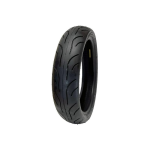Performing a DIY transmission flush is one of the more critical maintenance tasks that vehicle owners can take on. Regularly flushing your transmission fluid helps ensure smoother operation, improves shifting performance, and extends the life of your vehicle’s transmission. While it may sound complex, with the right tools and a clear understanding of the process, flushing your transmission fluid can be a straightforward task. In this comprehensive guide, you will learn the essential DIY transmission flush steps, including preparation, executing the flush, and post-flush maintenance. Armed with this knowledge, you can confidently tackle this maintenance task, maintain your vehicle’s performance, and save money on costly mechanic bills.
Understanding the Importance of a Transmission Flush
What Does a Transmission Flush Do?
A transmission flush is the process of removing old, contaminated transmission fluid and replacing it with fresh fluid. Over time, transmission fluid can degrade due to heat and wear, leading to a buildup of debris, metal shavings, and other contaminants that can impair the function of the transmission. A successful flush helps to remove these contaminants, replenish the fluid levels, and improve the overall functionality of the transmission system.
Benefits of Regular Transmission Flushes
Performing a DIY transmission flush has several advantages:
- Improved Shifting Performance: Fresh fluid maintains the hydraulic pressure required for smooth gear changes.
- Extended Transmission Lifespan: Regular flushes reduce wear on the transmission components, ultimately prolonging their life.
- Cost Savings: By flushing the transmission fluid yourself, you can avoid costly visits to a mechanic for routine maintenance.
- Enhanced Fluid Cooling: Clean fluid improves the ability of the transmission to cool and operate effectively.
Before diving into the DIY transmission flush steps, it’s essential to outline what you’ll need to complete the job successfully.
Supplies Needed for a DIY Transmission Flush
Tools and Equipment
Gather the following tools and equipment before starting:
- Socket wrench set: To remove bolts and bolts securing the transmission pan.
- Fluid pump: A hand-operated fluid pump helps transfer new fluid into the transmission.
- Drain pan: This is essential for collecting old transmission fluid.
- Jack and jack stands: For lifting the vehicle safely to access the undercarriage.
- Funnel: To safely pour and control the new transmission fluid flow.
Consumables
In addition to tools, you’ll also need several consumables:
- New transmission fluid: Choose a high-quality fluid specified for your vehicle’s make and model. Always refer to the owner’s manual for specifications.
- Transmission filter: In most cases, it’s advisable to replace the transmission filter during the flush to ensure clean fluid circulates.
- Gasket for transmission pan: If applicable, replacing the gasket ensures a proper seal.
- Shop towels or rags: For cleaning up spills and wiping tools.

Preparing for a DIY Transmission Flush
Step 1: Safety First
Before you begin the DIY transmission flush steps, prioritize safety. Ensure the vehicle is parked on a level surface, engage the parking brake, and put wheel chocks behind the rear tires. If you’re using a jack to lift the vehicle, make sure to utilize jack stands for added security.
Step 2: Locate the Transmission Pan
Once the vehicle is safely elevated, locate the transmission pan. This is typically found toward the middle section of the vehicle near the engine. Check your vehicle’s service manual if you have trouble finding it.
Step 3: Drain Old Fluid
After locating the transmission pan, follow these steps to drain the old fluid:
- Place the drain pan under the transmission pan to catch the old fluid.
- Use a socket wrench to remove the bolts securing the transmission pan. Carefully tilt the pan away to let the fluid drain completely into the drain pan. It may take a few minutes for all the fluid to drain fully.
- Be cautious of metal debris or contaminants in the old fluid, and ensure the area around you is clean and free of obstructions.
Step 4: Replace the Transmission Filter
While the fluid is draining, it’s an excellent opportunity to replace the transmission filter:
- Once the pan is removed, inspect the filter, which is typically attached to the transmission unit.
- Remove any screws or clips holding the old filter in place, and discard it.
- Install the new filter according to the manufacturer’s specifications. Ensure a tight fit to prevent leaks.
Executing the DIY Transmission Flush Steps
Step 5: Clean the Pan
With the old fluid drained and the filter replaced, it’s essential to clean the transmission pan before reinstallation.
- Use a shop towel or rag to wipe down the inside of the pan thoroughly. Remove any metal debris, sludge, or contaminants that may have accumulated.
- Inspect the pan and gasket area for any signs of damage. Replace the gasket if necessary to ensure a tight seal.
Step 6: Reinstall the Transmission Pan
Carefully reattach the transmission pan, ensuring that the new gasket sits in place:
- Align the pan with the transmission and secure it using the bolts you previously removed. Tighten them in a crisscross pattern for even pressure, which helps prevent leaks.
Step 7: Add New Transmission Fluid
With the pan securely attached, it’s time to add the new transmission fluid:
- Use a funnel to pour the new fluid into the transmission dipstick tube, following the manufacturer’s recommendations for the type and amount of fluid required.
- Often, this process involves periodic checking of the fluid level as you add more fluid. Always refer to the owner’s manual to determine the right quantity for your specific vehicle.
Testing Your Work After the Flush
Step 8: Run the Engine
After successfully completing the DIY transmission flush, it’s essential to start your vehicle and allow it to warm up:
- Start the engine and let it idle for a few minutes. This action allows the new fluid to circulate through the system.
- While the engine is running, shift through all the gears—including reverse—several times. This task ensures the new fluid reaches all parts of the transmission.
Step 9: Check Fluid Levels and Leaks
After running the engine and shifting through the gears, check the fluid level:
- Pull out the dipstick, wipe it clean, and reinsert it to check the fluid level accurately.
- Add more fluid if necessary, making sure not to overfill.
- Inspect the area around the transmission pan for any signs of leakage. If you notice any leaks, review your work and make adjustments as needed.
Step 10: Dispose of Old Fluid Properly
Disposing of old transmission fluid is an essential step not to overlook:
- Take the old fluid to a local recycling center or an auto parts store that accepts used fluid. Many jurisdictions have strict regulations about disposing of hazardous materials, so always follow local guidelines.
Post-Flush Maintenance and Tips
Regular Fluid Checks
After performing a DIY transmission flush, make it a habit to regularly check your transmission fluid levels, especially after the first few drives. Regular checks will help ensure that the fluid remains at optimal levels and is free of any contaminants.
Scheduled Maintenance
In addition to regular checks, ensure your transmission fluid flush is part of a broader maintenance schedule:
- Mileage Recommendations: Consult the vehicle’s owner manual for recommended flush intervals, which can range from 30,000 to 60,000 miles depending on usage conditions and transmission type.
- Driving Conditions: If you frequently drive in harsh conditions—such as extreme temperatures or stop-and-go traffic—consider more frequent fluid changes.
Signs Your Transmission Needs Attention
Be mindful of signs that may indicate your transmission needs servicing, which include:
- Slipping gears or difficulty shifting.
- Unusual noises or vibrations when the vehicle is in gear.
- Warning lights on the dashboard related to the transmission.

Conclusion
Completing DIY transmission flush steps is an empowering way to maintain your vehicle while saving money on service costs. Understanding the importance of regular maintenance and adhering to proper procedures can boost the longevity and efficiency of your transmission system. From gathering the right tools and supplies to executing the flush and monitoring your transmission performance, being proactive about your vehicle’s health will pay off in the long run.
While the steps may seem daunting for first-time do-it-yourselfers, following a clear, structured process will enable you to carry out this task effectively. Remember that if you feel uncertain during any part of the procedure, consulting a professional mechanic is always a wise choice. By prioritizing vehicle maintenance and making informed choices, you will keep your rides smooth and your performance optimal for miles to come.

